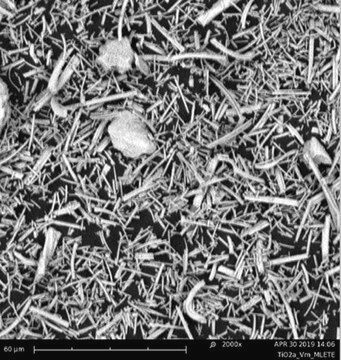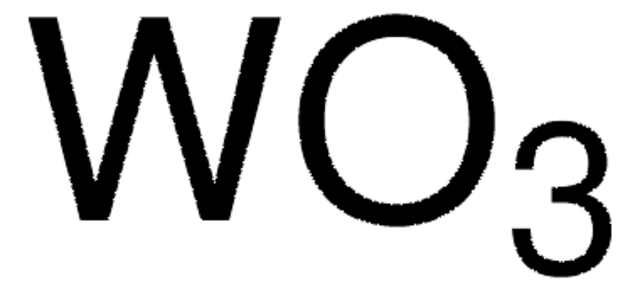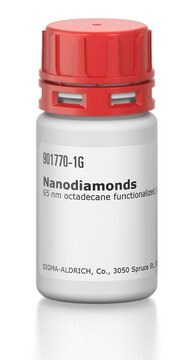Kluczowe dokumenty
774510
Titanium(IV) oxide
nanowires, diam. × L ~100 nm × 10 μm
Synonim(y):
Titania nanofibers, Titania nanowires, Titanium dioxide nanofibers, Titanium dioxide nanowires, Titanium(IV) oxide nanofibers, Titania, Titanium dioxide
About This Item
Polecane produkty
Formularz
nanowires
Poziom jakości
śr. × dł.
~100 nm × 10 μm
mp
>350 °C (lit.)
gęstość
4.26 g/mL at 25 °C (lit.)
ciąg SMILES
O=[Ti]=O
InChI
1S/2O.Ti
Klucz InChI
GWEVSGVZZGPLCZ-UHFFFAOYSA-N
Szukasz podobnych produktów? Odwiedź Przewodnik dotyczący porównywania produktów
Zastosowanie
Uwaga dotycząca przygotowania
Kod klasy składowania
13 - Non Combustible Solids
Klasa zagrożenia wodnego (WGK)
nwg
Temperatura zapłonu (°F)
Not applicable
Temperatura zapłonu (°C)
Not applicable
Wybierz jedną z najnowszych wersji:
Masz już ten produkt?
Dokumenty związane z niedawno zakupionymi produktami zostały zamieszczone w Bibliotece dokumentów.
Klienci oglądali również te produkty
Produkty
Dye-sensitized solar cells (DSCs) are 3rd generation solar cells combining the promise of high efficiency with low production costs.
In many technologies, performance requirements drive device dimensions below the scale of electron mean free paths (λe). This trend has increased scientific interest and technological importance of electrical resistivities at the nanoscale.
Among various ceramics, one-dimensional (1-D) piezoelectric ceramics have attracted significant scientific attention for use in energy harvesting.
TiO2 wykazuje właściwości półprzewodnika o szerokim paśmie wzbronionym i memrystora elektronicznie, z wysoką nieprzezroczystością i absorpcją UV optycznie.
Nasz zespół naukowców ma doświadczenie we wszystkich obszarach badań, w tym w naukach przyrodniczych, materiałoznawstwie, syntezie chemicznej, chromatografii, analityce i wielu innych dziedzinach.
Skontaktuj się z zespołem ds. pomocy technicznej





